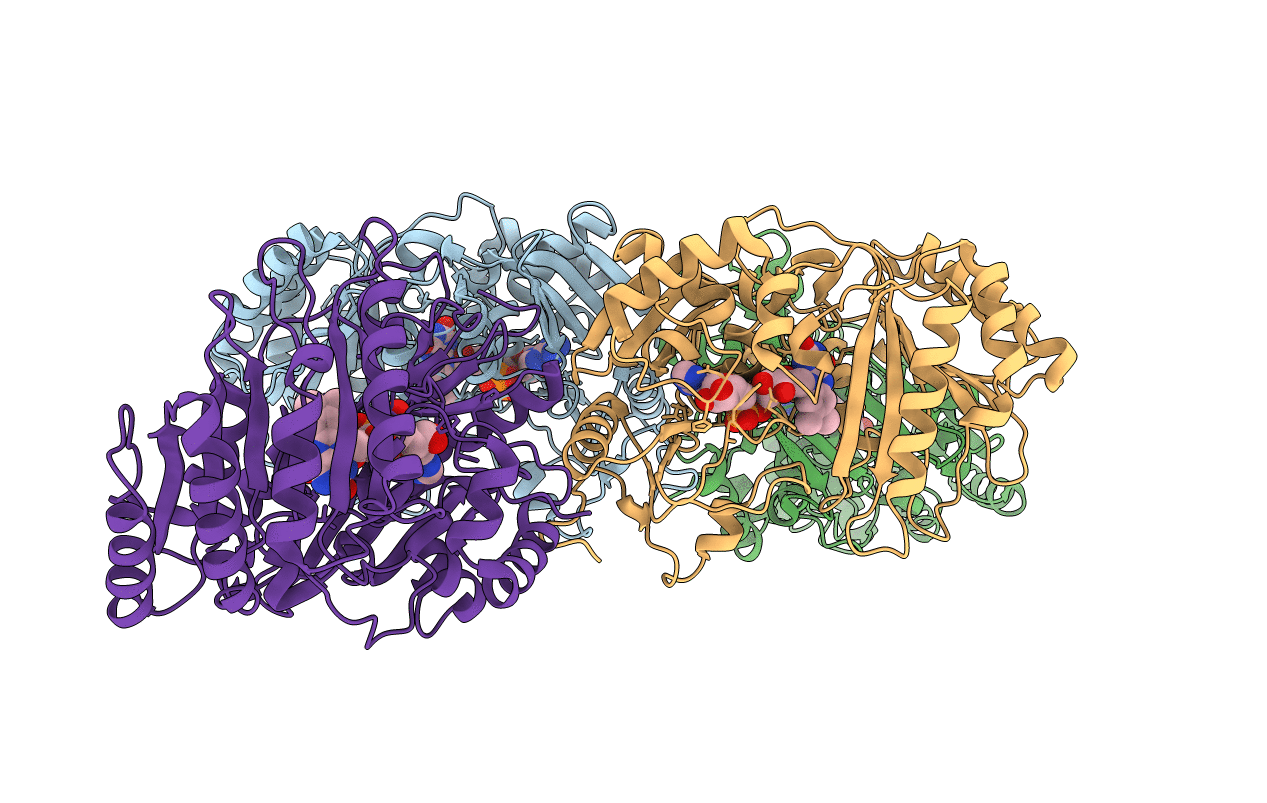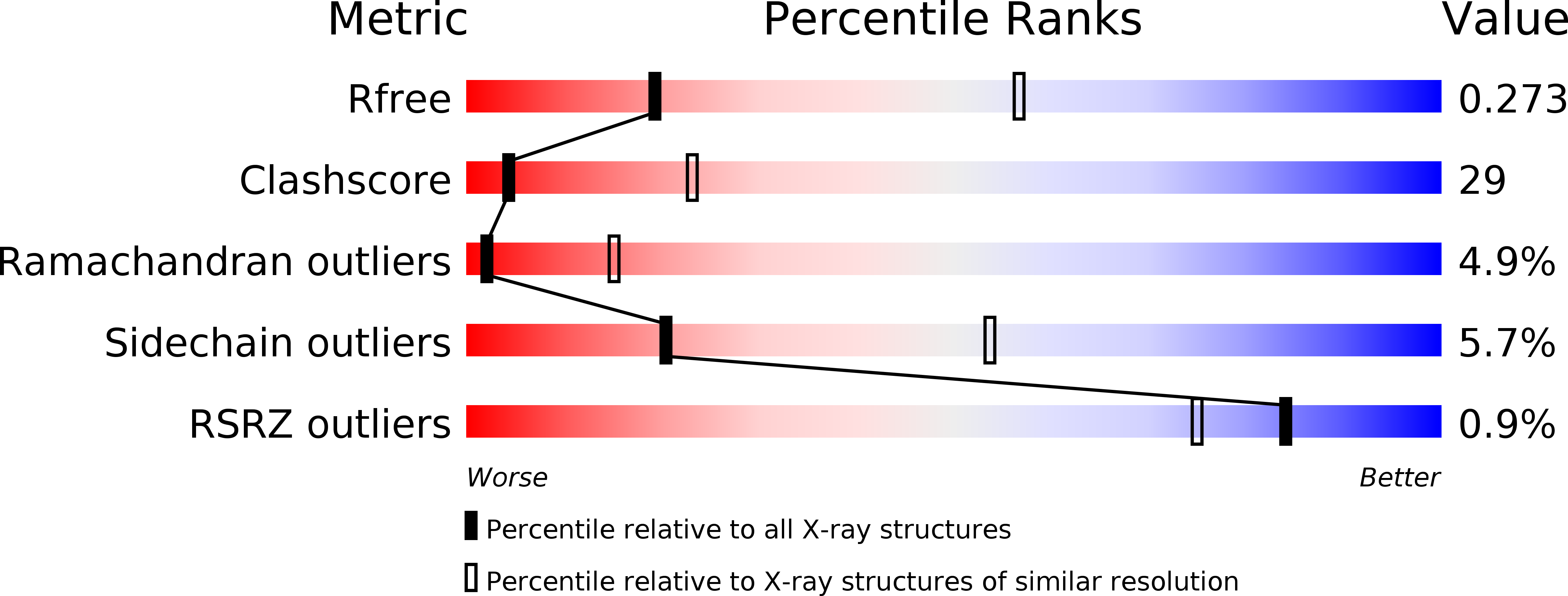
Deposition Date
2005-06-28
Release Date
2005-08-17
Last Version Date
2024-11-13
Entry Detail
PDB ID:
2BVG
Keywords:
Title:
Crystal structure of 6-hydoxy-D-nicotine oxidase from Arthrobacter nicotinovorans. Crystal Form 1 (P21)
Biological Source:
Source Organism:
ARTHROBACTER NICOTINOVORANS (Taxon ID: 29320)
Host Organism:
Method Details:
Experimental Method:
Resolution:
3.18 Å
R-Value Free:
0.28
R-Value Work:
0.25
R-Value Observed:
0.25
Space Group:
P 1 21 1


